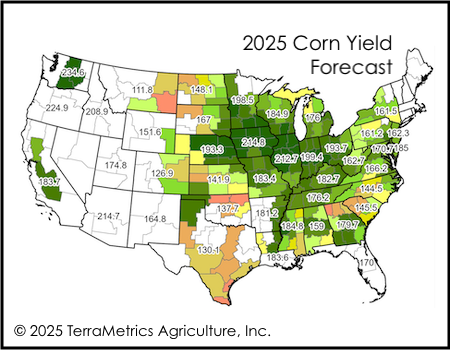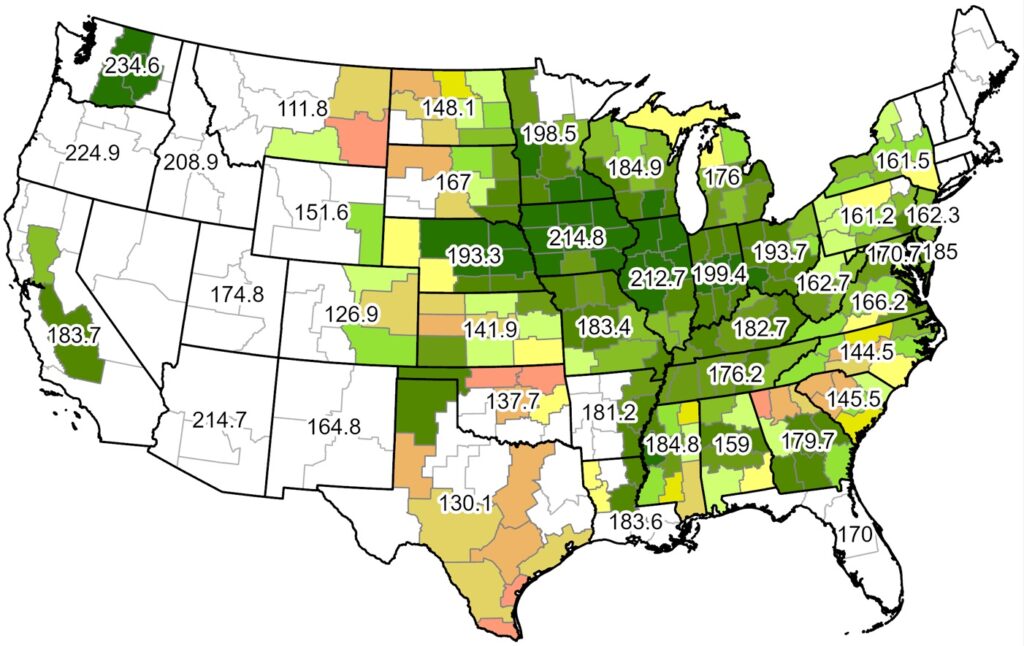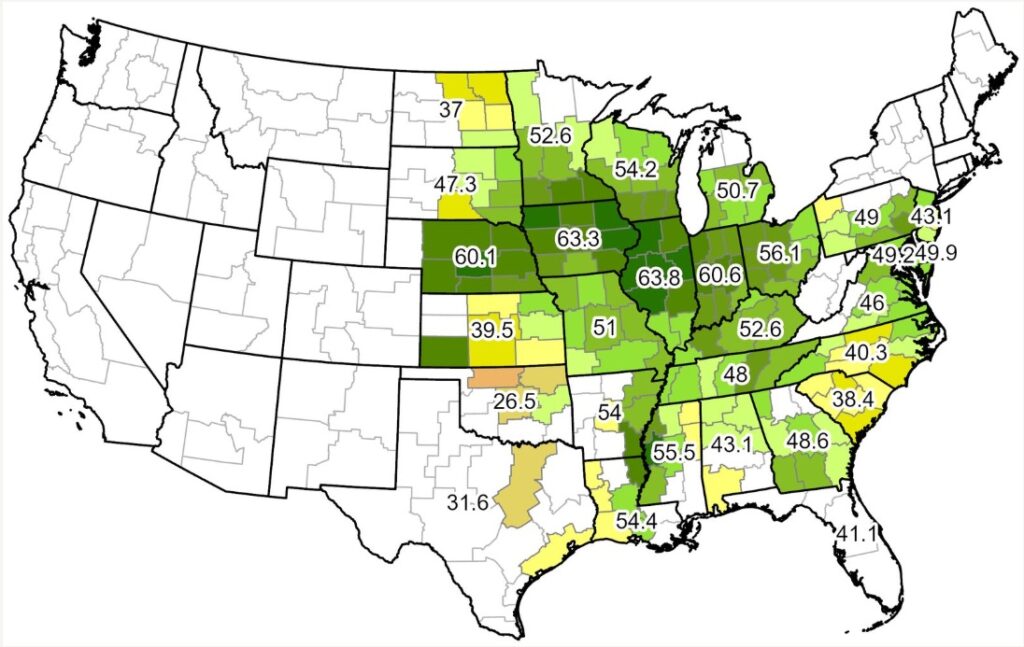
<< News & Events
TerraMetrics Agriculture
2025 Corn & Soybean Yield Projections
Lawrence, KS — September 15, 2025
This past Friday USDA published their latest Crop Production reports, a day and a half after TerraMetrics Agriculture released our eighth and final round of summer crop forecasts for 2025.
CORN
TerraMetrics Ag: 186.2 bu/ac
USDA: 186.7 bu/ac
SOYBEANS
TerraMetrics Ag: 53.5 bu/ac
USDA: 53.5 bu/ac
2025 TMAI Ag Corn Yield Estimate
TerraMetrics Ag’s satellite greenness-based estimate for the 2025 US corn crop is 186.2 bu/ac, which is 2.7 bu/ac above the 30-year trend line yield projection and 6.9 bu/ac above last year’s record-setting crop. For perspective, the second highest US yield is 177.3 bu/ac achieved in 2023. Based on recent crop progress reports, over two thirds of the crop was locked in on the crop. Crop maturation should continue to advance at a good pace over the next two weeks. With about one third of grain fill remaining nationally, a couple of major wildcards remain that are sure to have an impact on final yield as combines roll. August moisture across the central and eastern Corn Belt was quite low by historical standards. On the other hand, every top producer in the western Corn Belt is on track for above-trend and even record yield.
2025 TMAI Ag Soybean Yield Estimate
Our 2025 US soybean estimate is 53.5 bu/ac — the same as USDA’s September 12th projection. This current national yield forecast is 1.1 bu/ac above the 30-year trend line. This is 2.8 bu/ac above last year’s slightly sub-trend crop (2024 final yield: 50.7 bu/ac.) Final US soybean yield has exceeded 50 bu/ac six times, all of which occurred in the recent nine years. For perspective, the current record US yield is 51.9 bu/ac achieved in 2016. Thanks to recent moisture, solid good crop conditions can be found in the northern and western Corn Belt States. It has been an unusual finish in the eastern Corn Belt which started the summer with a warm and wet July that was good for soybeans. That was followed by one of the driest Augusts on record throughout the Ohio River watershed.




